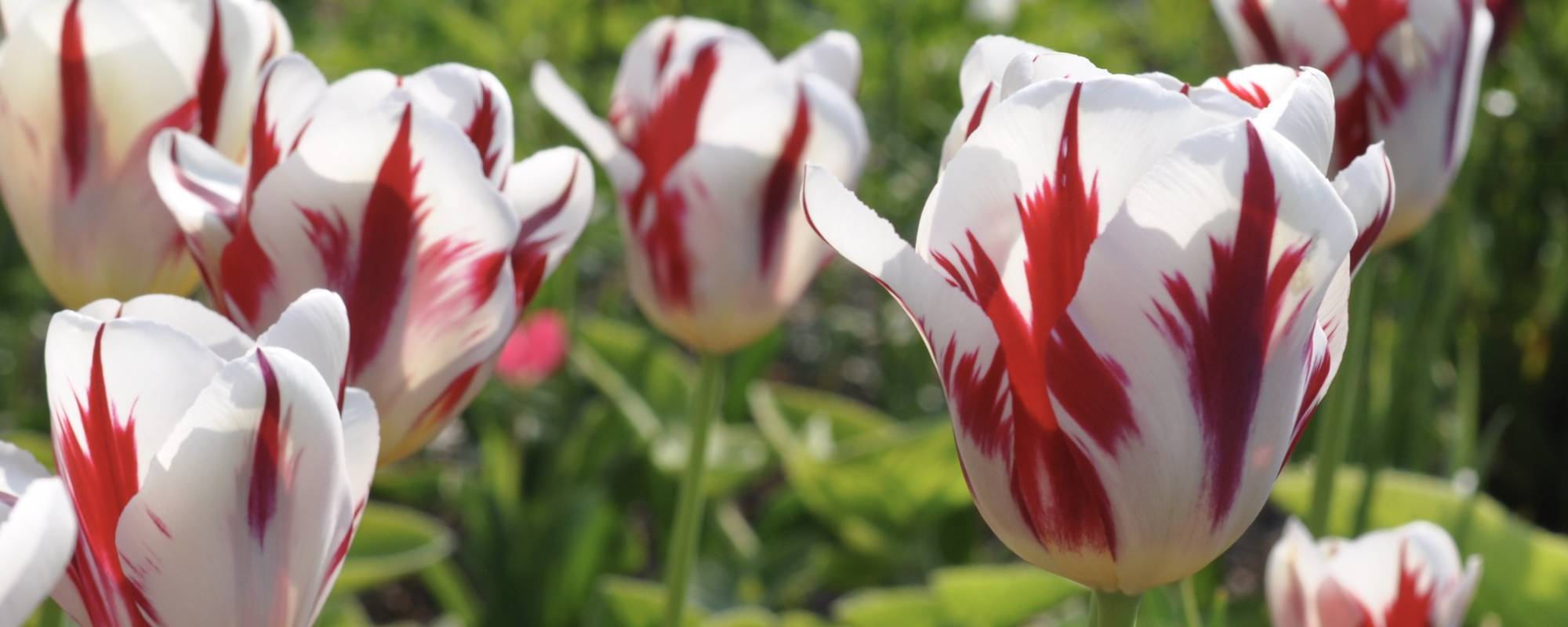
Tulip Growing in Wakefield
01 May 2020
What better way to celebrate spring in Wakefield than with tulips, for Wakefield is the nation’s home of historic tulip growing.
The very first spring in The Hepworth Wakefield Garden was something we wanted to cherish and so last autumn we planted around 4000 tulips amongst our perennials, digging an individual hole for each bulb and burying them like treasure, with the hope that six months later the flowers would reward us.
Reward us they have – as throughout April and into May over twenty different varieties have bloomed across the garden. The tulips were selected by our garden designer Tom Stuart-Smith, with a nod to the history of tulip growing in Wakefield.
In the 18th and 19th centuries people had all kinds of intriguing hobbies and all over Britain groups of florists would meet in pubs to compete in the breeding and presentation of certain specific types of flower. Indeed, from the 17th century the word florist meant somebody who dedicated themselves to the growing of certain key plants. There were initially four florists’ flowers, ranunculus, anemones, carnations and tulips. The plants were grown and bred to match specific parameters of colour, purity and shape.
The Wakefield and North of England Tulip Society was established in 1836 and at the time was one of hundreds of tulip societies across the country, however it is now the very last of its kind. The society is, however, thriving with members from all over the country and throughout the world growing English Florists’ Tulips, which are the direct genetic descendants of the ones grown in the 17th century.
Sadly it would have been this time of year when the tulip shows would have been typically held (they are of course cancelled due to Coronavirus) with the individual blooms presented, as they would have been traditionally, in plain, brown glass, beer bottles, which beautifully highlight the incredible colouring and luminosity of these precious blooms. Do have a look at The Wakefield and North of England Tulip Society website and archive where you can see incredible photos of these displays.
In our garden we couldn’t plant actual English Florists’ Tulips, as they are precious bulbs, difficult to come by and historic treasures, so our tulips are strong-growing, modern varieties, but some them are reminiscent of the wonderful flamed and feathered flowers which are grown by the society and are illustrated in the paintings by the Dutch masters.





